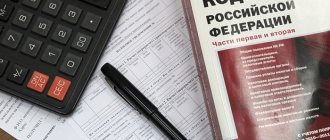Definition of the concept
Local taxes include mandatory payments that are aimed at replenishing the municipal budget. The sizes and rates are determined by regional authorities. But since local taxes are an integral part of state taxes, calculations must be made on the basis of legal norms.
When establishing a certain tax and its rate, the object, base period and calculation formula are determined strictly by federal legislation. The powers of local authorities include determining the final value of the rate, the deadline for payment and the procedure for its implementation, and preferential categories of persons who are exempt from paying municipal taxes and fees.
What taxes are local?
Local taxes in the Russian Federation include the following types of payments:
- land (charged from land owners);
- property tax for individuals;
- a fee levied on persons engaged in certain types of business activities;
- tourist (paid by persons staying in the region through intermediaries, whose role is played by hotel organizations, persons and enterprises renting out housing);
- fee for organizing paid parking lots.
It is worth noting that the establishment of local taxes falls within the competence of municipal authorities, which determine the need of a region or locality for funds. However, all calculations must be carried out in strict accordance with federal tax laws.
Local taxation
Local taxation is a group of taxes that are levied not by the central government, but by the municipality (local authorities). Local taxation can take many forms—property tax, local income tax, sales tax, head tax, and so on.
Local taxation: history of formation
The emergence of local taxation in the Russian Federation dates back to the creation of the first local governments (zemstvos). Zemstvo duties (taxes) were introduced gradually. Moreover, at the beginning of the 19th century, they were collected from the population without any special rules, and their volumes were established by the municipality (local government).
The first act that regulated local taxation was the Decree of Emperor Alexander on May 1, 1805. This document was based on the previous Regulations on Zemstvo Duties. The only difference was that now there were temporary and annual contributions. In addition, it was decided to divide into voluntary compulsory taxes.
Subsequently, from 1808 to 1816, there were many changes in the system of zemstvo duties, which concerned natural and financial duties. In particular, they were divided into two forms - partial and general.
In the 19th century, another form of zemstvo duties was in effect in Russia—in kind. In this case, payments were made not in money, but through personal work, taking into account the tasks set by the municipality and the government. One of the main ones was road duties, the execution of which was taken into account as local taxation. This type of tax was mandatory for ordinary people (burghers and peasants). As for merchants and other honorary citizens, they were exempt from such work.
In 1851, new laws regarding zemstvo duty began to apply in Russia. Starting this year, they were all divided into state (general) and local. The former were sent to cover the needs of the population of the empire as a whole, and the latter - to the provinces (groups of regions).
After the abolition of serfdom in 1864, a zemstvo reform was carried out, which implied the streamlining of local taxes. At the same time, in terms of zemstvo duties, only local taxes remained, which are not part of the general financial system of the country and are not subject to general management. Also, since 1864, the list of zemstvo duties was increased, divided into two categories - mandatory and optional. The first included the retention of mortgages and magistrates, military duties, and so on. The volume of provincial taxes (duties) has also increased, for example, withholding for medical mortgages, guardianship authorities, and so on.
Immediately after the end of the October Revolution in 1917, the old form of zemstvo self-government ceased to function. In its place came another - local councils. By mid-1918, Temporary Rules concerning the regulation of zemstvo taxation were created. At that time, they had the simplest form due to the underdevelopment of the local apparatus. Thus, there were only head taxes, fees on livestock and residential buildings (premises) outside the city.
In 1923, the list of external taxes was clarified and five new surcharges to state taxes and another 20 independent fees and taxes appeared. Already in 1926, the Regulations on Local Finance appeared (it provided for four main taxes). At the same time, local authorities received the right to impose additional taxes on the basis of laws (there were 14 in total).
In 1930-1932, a powerful reform was organized, which implied the abolition of many non-essential points. Thus, the list of local taxes was reduced to two - a tax on buildings and land rent. In 1942, the collective farm tax was added to them.
Subsequently, the list of taxes did not change for a long time until the 80s of the 20th century. Thus, in 1981, three types of local taxes arose - land, transport and property. In a number of countries of the USSR, individual collection appeared at collective farm markets. Thus, for more than fifty years, only four taxes were in force in the country, which did not have any special fiscal significance. Their share in the total income group was only a couple of percent.
Local taxation: types and features
Local taxation in the Russian Federation and in other countries has some differences.
Thus, four main groups of taxes can be distinguished abroad:
1. Personal (own) local taxes. They are established by the municipality and are valid only in a certain territory (usually a local union). These taxes include direct and indirect taxes. For example, they include taxes on personal income and profits of an organization (firm, company), land taxes, taxes on purchases and professions, local excise taxes, and so on. The biggest role is played by property taxation and income taxes (for companies and individuals).
2. State-level tax surcharges in favor of the municipality. This group includes deductions from general state taxes that remain in local budgets. The maximum amount of deductions and allowances is usually regulated by central authorities.
3. A group of taxes that are taken in the form of payments for services. They are charged by the municipality for certain services provided to the population (sewage, gas, water supply, electricity, communications, parking, and so on).
4. A group of taxes reflecting the features of local government policy. For example, these include environmental taxes. They do not have any special fiscal significance, but they have a significant effect on environmental protection and the possibility of using natural resources (in a limited form).
As for the Russian Federation at this stage, in the country (according to the norms prescribed in Article 12) local taxes are those established by the legal acts of the municipality and the Tax Code of the Russian Federation. Such taxes are required to be paid in certain regions.
In Russia, taking into account Article 15 of the Tax Code, there are two local taxes. The first type is a tax that is charged on the property of citizens (individuals). The second is the land tax (land tax).
Municipal authorities (local self-government) cannot establish those types of taxes that are not provided for at the legislative level (Federal legislation). In the largest cities, for example, St. Petersburg or Moscow, taxes must be established and introduced by the actions of the constituent entities of the Federation. At the same time, local taxes always fill local budgets.
If we take the share of local taxes in the total consolidated budget of the country, then it is insignificant and amounts to up to 2%. Moreover, the funds received from local taxation are only part of the municipality’s income. The main source is payments of regional and federal taxes.
There are 83 different municipal formations on the territory of Russia. Almost all of them have the same problem - direct dependence on the central apparatus, namely the federal government. In most cases, regions do not have enough personal funds to cover current expenses. As a result, local authorities may fail to meet their obligations. With sufficient financial security, the municipality can guarantee the successful resolution of many issues.
In the future, at the legislative level, it is planned to remove two types of taxes (on property and on land), replacing them with one - on real estate. But so far this process is stuck due to the insufficient development of the real estate industry.
The tax that is imposed on property for citizens (individuals) is regulated at the legislative level. Tax payers are all citizens who are not legal entities and who own taxable objects - garages, dachas, apartments, houses and other structures. This also includes mechanisms, self-propelled vehicles, pneumatic propellers and other equipment.
Tax collections from the first category are taken into account the value of the objects and usually do not exceed 0.1%. As for the transport tax, it depends on the power of the car. Tax authorities calculate the amount of taxes. Payments by citizens must be made in two periods - before September 15 and before November 15.
If the building or vehicle is new, then the tax must be paid earlier - from the beginning of the year that follows the year of purchase of the property. If a car has several owners, then the tax is paid by the person for whom the vehicle is registered.
For real estate (structures, buildings, premises) that have come into possession by inheritance, the tax is taken from the heirs at the time the law comes into force. If an object that is subject to taxation is physically destroyed, then the tax may not be paid from the month when the event occurred.
If the rights to a taxable object (structure, premises, building) are transferred from one person to another, the original owner must pay the tax within the period from the beginning of the year to the month when he lost ownership of the property. For the new owner, the countdown begins from the month when he, accordingly, had this right.
Property tax for individuals
In relation to this type of mandatory payments, two categories of property are distinguished:
- real estate: houses and apartments, country houses, garages and other structures;
- movable: all vehicles, except cars and motorcycles.
Payers of this type of tax are persons who own the specified objects. Moreover, these can be both residents of the Russian Federation and foreign citizens. The basis for taxation is the estimated inventory value, which is multiplied by the appropriate coefficient determined by municipal authorities and tax services.
A number of categories of persons are exempt from paying property tax. These include:
- people assigned to state awards of various degrees;
- participants in the Great Patriotic War and other military operations;
- persons who participated in the measures to eliminate the consequences of the accident at the Chernobyl nuclear power plant;
- active military personnel, as well as those who retired with over 20 years of service;
- families of military personnel who died in the line of duty, as a result of illness or accident;
- pensioners;
- cultural and artistic figures, as well as persons whose property is used as museums, galleries, amateur theaters, and so on;
- from owners of buildings with an area of less than 50 square meters. m, located on the territory of gardening farms or cooperatives.
The tax payment period is 365 days. Moreover, if the owner of the property changes during a calendar year, the obligations for this type of payment are assigned to the previous owner.
Characteristics of local taxes
From the list of Article 15 of the Tax Code, it is obvious that the volume of local taxes in the general tax system of the Russian Federation is quite small compared to federal ones. Let's look at them in more detail.
Land tax
The local tax is land tax (Chapter 31 of the Tax Code of the Russian Federation). It is paid by legal entities and citizens who own land plots.
A plot of land located within the boundaries of a municipality is a taxable property. The tax base is determined from the cadastral value of the site as of January 1 of the reporting year.
Tax rates for local taxes are established within the limits adopted by the norms of the Tax Code of the Russian Federation. For land tax, the maximum rate, depending on the category of land, can be differentiated and vary from 0.3% to 1.5% (Article 394 of the Tax Code of the Russian Federation):
- a rate of up to 0.3% is applicable to agricultural land, land acquired for personal farming, occupied by housing and related infrastructure, as well as land limited in circulation and provided for defense, security and customs needs;
- a rate of up to 1.5% is allowed for other plots of land.
The procedure for paying local taxes is established by municipal authorities, and they also set payment deadlines for taxpayer organizations. At the same time, regarding land tax, local authorities have the right to determine the reporting periods and the need to pay advance payments, but they may not do this (Articles 393, 396, 397 of the Tax Code of the Russian Federation).
Municipal authorities that establish local taxes and fees also introduce benefits for these taxes. Regarding the land tax, the Tax Code of the Russian Federation lists categories of organizations and individuals that do not pay tax (Article 395 of the Tax Code of the Russian Federation); at the local level, additional types of benefits can be applied, from partial reduction of the tax base to complete exemption from paying tax.
Property tax for individuals
Local taxes, the list of which is given above, also include property tax for individuals (Chapter 32 of the Tax Code of the Russian Federation). Taxpayers are citizens who own real estate: residential buildings and premises, garages, unfinished construction projects and other buildings, structures and structures (Article 401 of the Tax Code of the Russian Federation). The tax base is determined from the cadastral, and in some cases from the inventory value of the property.
The property tax for individuals, like other local taxes and fees, is introduced by municipal regulations. The authorities themselves can establish the procedure for determining the tax base and specific tax rates.
The marginal rates for local taxes and fees are established by the Tax Code of the Russian Federation; for the property tax of individuals they are as follows (Article 406 of the Tax Code of the Russian Federation):
- 0.1% for housing, unfinished residential buildings, garages, outbuildings up to 50 sq. m. m on a personal plot; by local authorities this rate can be reduced to 0%, or increased by no more than 3 times;
- 2% for objects with a cadastral value of more than 300 million rubles. and objects from the list of clause 10 of Art. 378.2 Tax Code of the Russian Federation;
- 0.5% for other real estate.
Since benefits for local taxes are established not only by the Tax Code of the Russian Federation, but also by municipal acts, for property taxes, each region can determine them themselves in addition to those already specified in the code.
Land tax
Land tax refers to local taxes that are designed to replenish municipal budgets. It is worth noting that the size of this payment is in no way related to the results of the owner’s business activities. This indicator is determined solely on the basis of the value of the land: its chemical composition, fertility, as well as location and other criteria.
Responsibilities for paying land tax are assigned to both legal entities and individuals. Moreover, these can be both direct owners or landowners, and tenants who exploit this resource on the basis of appropriate rights. Speaking about the latter, it is worth noting that they are not responsible for paying tax payments, but it lies with the lessor.
Certain land plots, in accordance with the law, cannot be considered objects of taxation. These include:
- lands withdrawn from economic circulation (mostly we are talking about those that were transferred to military departments);
- lands on which cultural and historical sites are located;
- areas near customs zones;
- forestry;
- land near water bodies.
Preferential categories include:
- government services and enterprises;
- organizations of a religious nature;
- public associations of disabled people;
- arts and other cultural organizations;
- individuals, as well as communities that represent ethnic groups of the Northern and Far Eastern regions;
- organizations operating in special economic zones.
Property tax
Among other fees, local taxes include fees from property owners. It is worth noting that if the owners of residential properties are several persons, then they pay an amount corresponding to the share belonging to them. The following objects are not subject to taxation:
- immovable residential buildings that have not been privatized (are owned by the state);
- houses in the exclusion territories;
- real estate that is operated by family-type orphanages (purchased or specially built for these purposes);
- small country houses;
- real estate owned by large families (if there is more than one property, they are taxed);
- dormitories of educational institutions, as well as production and non-production enterprises.
Parking fee
Local taxes include fees from owners of paid parking lots. It is worth noting that this type of payment is calculated based on the territory allocated for these commercial purposes. The coefficient established by law is multiplied by the number of square meters occupied by parking (percentage of the minimum wage established in the reporting year). Payments for this type of tax are made quarterly.
Business tax
Local taxes also include fees for certain types of business activities, namely:
- sale of all kinds of goods;
- provision of household services (listed in the Cabinet of Ministers);
- carrying out exchange transactions with currency values;
- entertainment business (attractions, concert programs, film distribution, etc.).
The establishment of local taxes falls within the competence of regional or city authorities. They are the ones who determine the percentage that will be charged to entrepreneurs in the reporting period (it may depend on the economic condition and needs of a particular area). In addition, the amount of payment may also increase depending on the type of activity, as well as the location of the enterprise. A commercial organization is also required to acquire a trade patent.
What fees are included in the local list?
Local taxes and fees are enforced in accordance with state and local regulations. For cities with a special status - Moscow, Sevastopol, St. Petersburg, fiscal payments are established in local legislative regulations. Art. 15 of the Tax Code of the Russian Federation establishes types of fees that have not changed for 2018:
- Registration. It is levied on the activities of an individual as an entrepreneur. The amount is tied to the amount of salary and benefits;
- For the construction of facilities in the resort area. The customer and contractor pay for the right to construction work at the local rate;
- Resort. It is paid by tourists and vacationers at local rates;
- Target. The type and rate are determined by the municipal government. Legal entities and individuals pay 3% of the annual labor funds for landscaping, cleaning the territory, maintaining the police, etc.;
- Advertising. An amount of 5% of the price of advertising in local media is paid by legal entities and individuals;
- Resale of cars, office equipment, computers. The municipal budget receives 10% of the transaction amount;
- Owning a dog. Paid per year in the amount of 1/7 of the monthly salary;
- Trade in alcoholic beverages. Legal entities pay 50 mrot, and individuals – 25 mrot annually. Temporary retail outlets are taxed at 50% of the minimum daily wage.
This is not a complete list of local taxes and fees for 2018. The list includes fees for parking, organization of lotteries and prize draws, apartment warrants, use of state symbols, organization of commercial filming. Business and real estate taxes have some nuances.
You can read more about indirect taxes in our article here
What do you need to know about local property taxes?
What taxes go to the local budget from the activities of an entrepreneur? This group includes fees for all types of transactions:
- sale of goods and products of various types;
- household services for the population according to the Cabinet of Ministers list;
- exchange transactions with currency and securities;
- entertainment business - holding attractions, concerts, operating cinemas and commercial museums.
The tax rate is set by regional and city authorities. The percentage depends on the specific reporting period and the economic state of the region. The amount of the fiscal payment is also determined by the main type of activity and the location of the company. In this case, purchasing a trade patent is mandatory.
Nuances of local property tax
Local taxes and fees also include payments from property owners. The owners contribute funds to the regional and city fund:
- residential non-privatized buildings;
- houses in areas of alienation;
- buildings of children's family homes;
- country outbuildings;
- real estate owned by large families;
- dormitories of universities, technical schools, enterprises.
The timing of fiscal payments is regulated at the local level, but the period for payment of property taxes is set as until September 15 or November 25, 2021.
Similar articles
- What taxes are indirect?
- Table of federal, state and local taxes
- Which budget is the land tax included in?
- Taxes in 2021 - federal, regional and local
- Accounting for calculations of taxes and fees
Tourist tax
Local taxes and fees also include tourism, the collection of which is decided by the authorities of the relevant region, city or other locality. It is worth noting that this payment falls on the shoulders of persons who arrive at a specific point for tourism or any other purposes. Certain categories of citizens are exempt from this tax, namely:
- persons arriving on a business trip;
- disabled people, as well as their accompanying persons;
- veterans of the Great Patriotic War;
- persons who arrived for treatment in sanatoriums that have the appropriate license;
- children who have not reached the age of majority at the time of arrival.
The tax amount is included in the cost of accommodation, and therefore we can say that the intermediaries for its payment are:
- hotels, hotels, hostels, campsites and other establishments that receive and accommodate guests;
- agencies, as well as apartment owners who legally rent out living space.
General characteristics of local taxes
If part of the taxes paid to the federal budget (VAT, personal income tax, income tax, etc.) is later returned to the regions in the form of subsidies, then taxes at the regional and local level go entirely to the corresponding budget directly. Local taxes and fees form the revenue side of the budget of municipalities.
When paying taxes, their distribution among the relevant budgets occurs on the basis of the BCC assigned to each type of tax payment. Which taxes go to the local budget can be determined by the code “03” as part of the 20-digit KBK (12 and 13 digits).
Local authorities cannot independently “create” new taxes, since their range is already determined by the Tax Code of the Russian Federation and is controlled by the state. Local taxes and fees are established by the Tax Code of the Russian Federation, and are in force and canceled on the basis of regulations adopted by the authorities of municipalities. Typically, local taxes are decided upon, and federal cities make laws. Each regulatory act on such a tax, adopted at the local level, is then sent for control to the Federal Tax Service and the Ministry of Finance of the Russian Federation.
In the municipal territory that has adopted the relevant normative act, local taxes are put into effect and are obligatory for payment, except in cases where a special tax regime is in effect in the same territory, providing for exemption from the payment of certain local taxes (clauses 4, 7 of Article 12 of the Tax Code RF).










